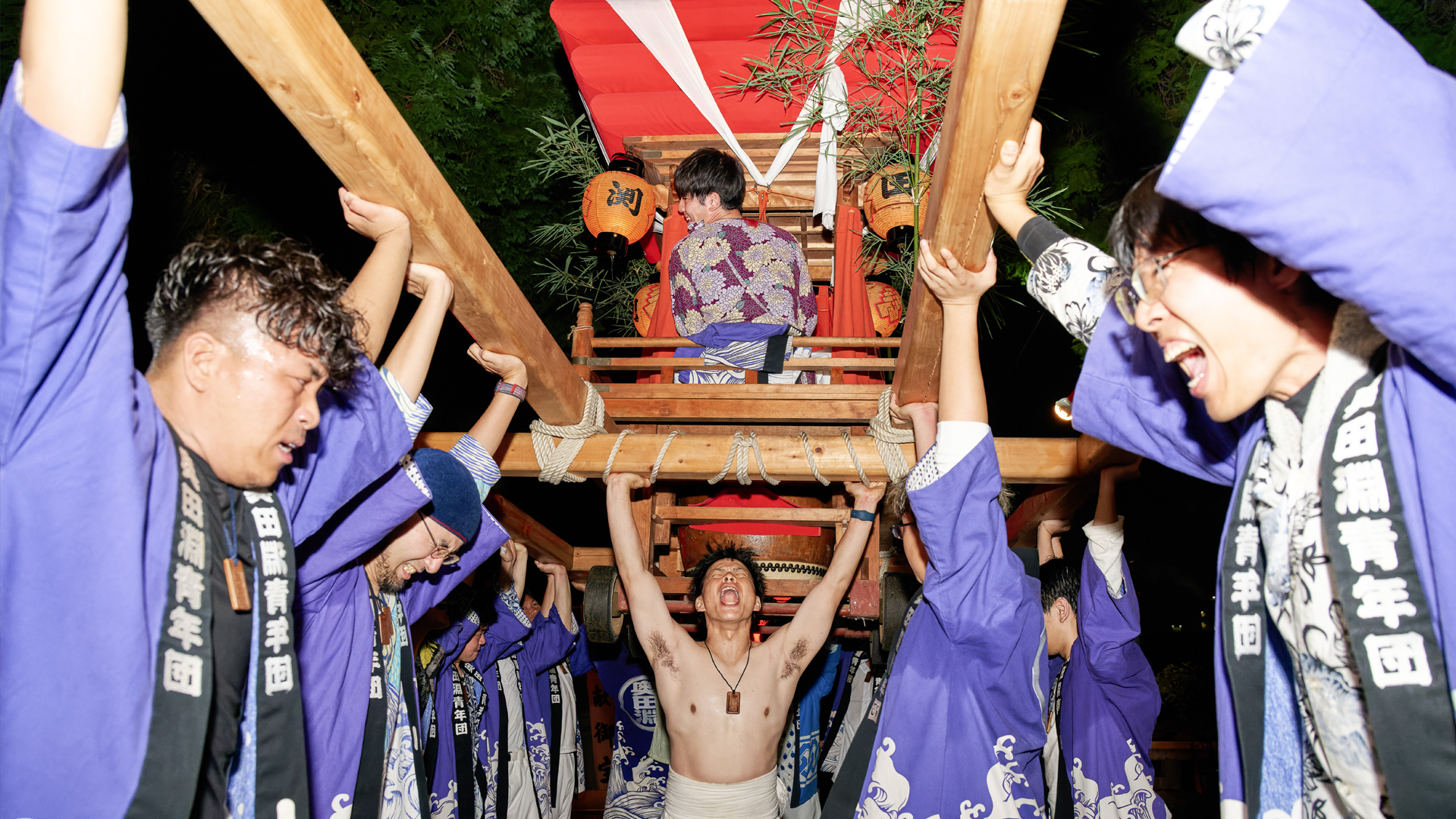What is “Becha fest.”? It’s Japanese traditional terrible fest.
“Becha Festival” with a history of 461 years.⛩
Becha Festival is the festival for crying children.😫😭 It doesn’t make sense, does it? “Becha” is Tengu👺, goblin.👿
It is a Festival that children are chased and beaten by Tengu with bamboo.
You might have a question, Isn’t it painful for children to be beaten with a bamboo? Yes, it’s pretty painful!!! But being beaten by Becha means to spend a state of perfect health over the years.
I was also beaten a lot when I was child. But now, I beat them.
It is held at Kojima Shionasu in Kurashiki city on the third Saturday and Sunday of October in every year.
Written by Kyohei S
What is the Becha Festival?
The Becha Festival, officially part of the Shionasu-Eki Shrine Autumn Grand Festival, is a unique and lively traditional event that dates back to 1558. It is known as one of the most unusual and energetic festivals in the region.
At its heart, the festival features mysterious masked figures known as Becha—men wearing long-nosed tengu-like masks—who wield bamboo branches and playfully swat at children and festival-goers. This symbolic act is meant to drive away evil spirits and bring good health for the coming year. Local legend says that being hit by a Becha ensures a year of good health and safety!
Festival Highlights
■ Saturday Night (Yoi-Matsuri – Eve Festival)
•A dramatic gathering of four traditional mikoshi (portable shrines), known as Sensa-iraku, brought in by local youth groups.
•Groups include:
•Kami-Shimo Youth Group
•Okudabuchi Youth Group
•Minami Youth Group
•“Enrei” Women’s Mikoshi Team
•The mikoshi enter the shrine grounds with music, chanting, and intense energy, creating an unforgettable spectacle.
■ Sunday (Main Festival Day)
•Becha chase scenes throughout the neighborhood!
•Locals and visitors alike run, laugh, and sometimes get gently swatted by the Becha in a mix of tradition and playful chaos.
•Children taunt the Becha with chants like:
“Your nose isn’t that big—it’s flat! Bee-cha! Bee-cha! Becha-becha!”
•Brave ones can even ask for a photo with a Becha (but beware—they might hit you right after!)
How to Enjoy the Festival
•Dress comfortably: Lightweight, durable clothes are recommended. Long sleeves and pants help protect your skin from bamboo hits.
•Build your stamina: The Becha can run fast—escaping takes energy!
•Know your surroundings: Be aware of where to run (and where not to), in case you’re targeted!
•Offer a donation (ohana): The Sensai-raku might perform in front of your home or for you personally as a blessing.
•Photography is welcome: Capture your best shots, and share them with the festival community!
Important Reminders
•Do not escape using bikes, cars, or motorbikes.
•Please do not enter private property, fields, or rice paddies while running.
•The Becha are treated as sacred figures. Please be respectful—no hitting or pushing.
•Injuries like light bruises or welts from the bamboo may occur—thank you for understanding this is part of the tradition.
“A Tradition Passed Down Through Generations — The Becha Festival of Shionasu Yaku Shrine”
As children, they were frightened and chased by the fearsome becha — masked figures portraying demons, tengu, and hannya. They cried as the taiko drums echoed through the town and the festival energy swelled.
But as they grow older, those same children join the local youth association, typically around high school age. They take up the drumsticks to play the taiko, shoulder the weight of the sacred Choseiraku float, and eventually, become the very becha they once feared — donning masks and costumes to chase after the next generation of children.
In this way, fear becomes pride, and each generation inherits and relives the tradition. This cycle continues, repeating through time, ensuring the spirit of the festival lives on into the future.
This is the essence of the Becha Festival, held each autumn at Shionasu Yaku Shrine.
“Do You Think Festivals Where Tengu and Oni Scare Children Are Too Frightening?”
To outsiders, Japanese festivals where masked figures like tengu (mountain goblins) and oni (demons) deliberately scare children might seem harsh or even frightening. And truth be told, for the children themselves, it is terrifying — many cry and cling to their parents as the fearsome figures approach with loud drums and dramatic movements.
But here’s something remarkable: not once has the festival committee received a complaint saying it caused lasting trauma.
In fact, for many, those childhood memories — of fear, awe, and excitement — become a cherished part of growing up. As they grow older, children begin to understand the cultural meaning behind the roles and rituals. Eventually, some even take pride in becoming the very figures that once scared them.
It’s not about causing fear for fear’s sake — it’s a rite of passage, a living tradition that connects generations and builds a strong sense of community.









